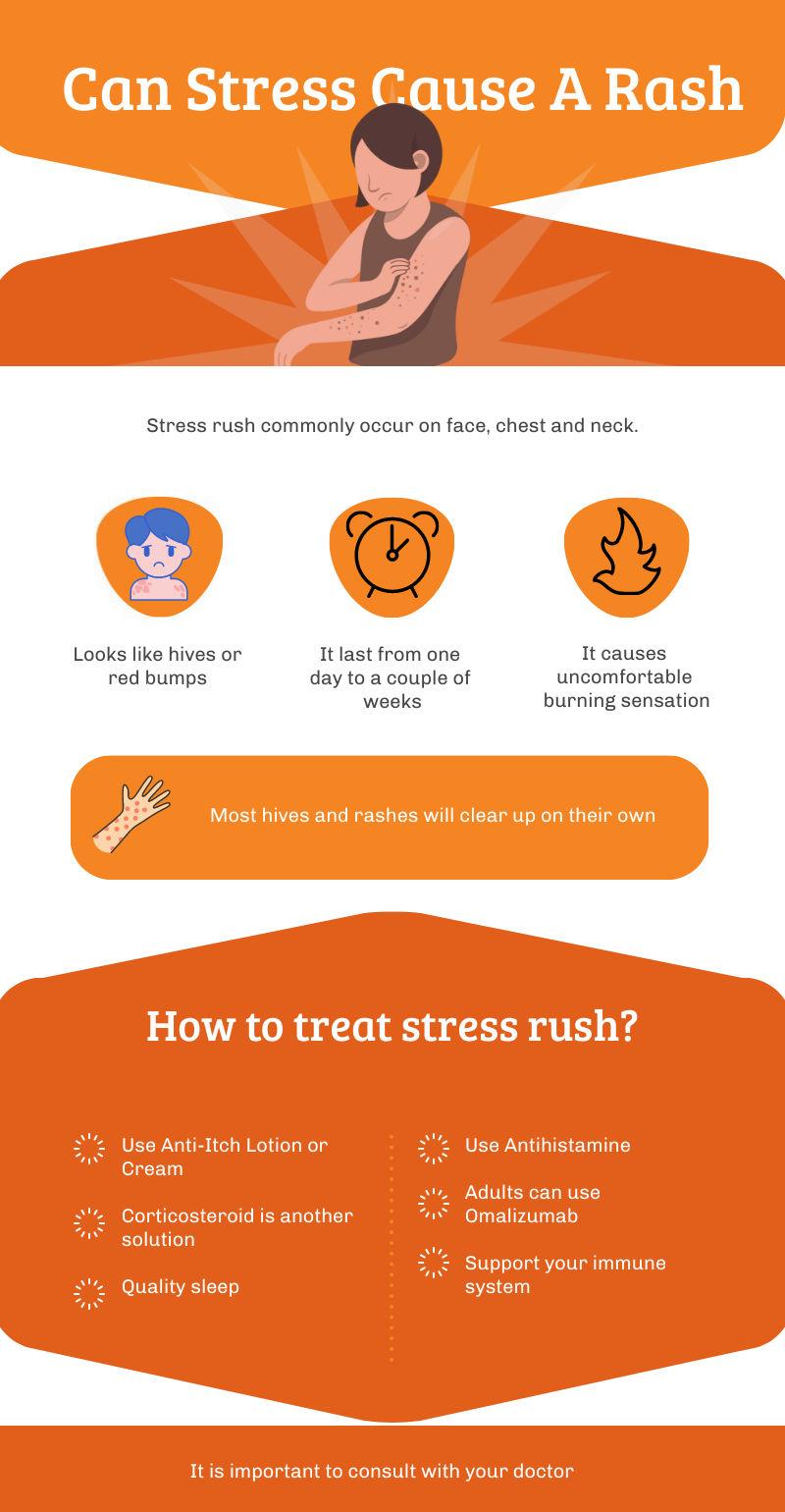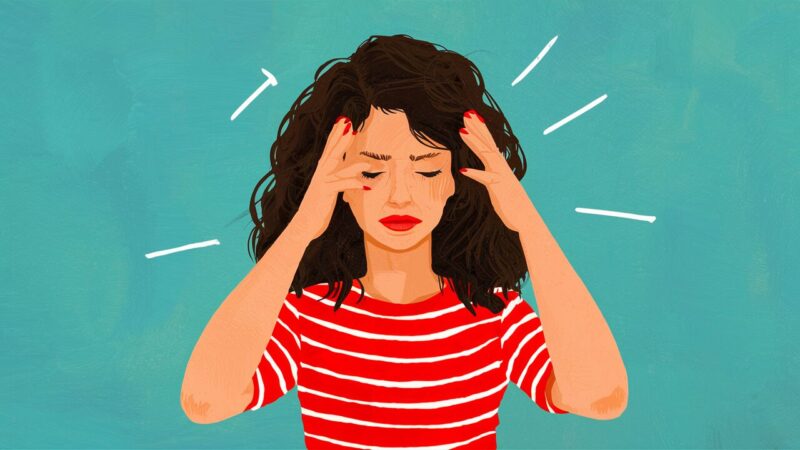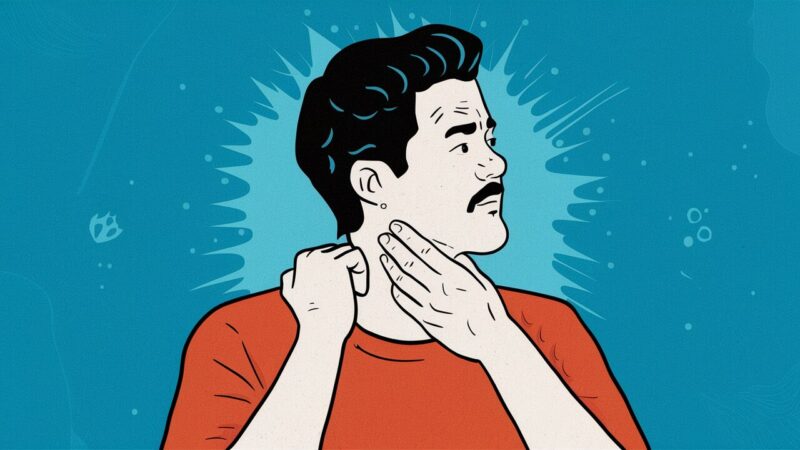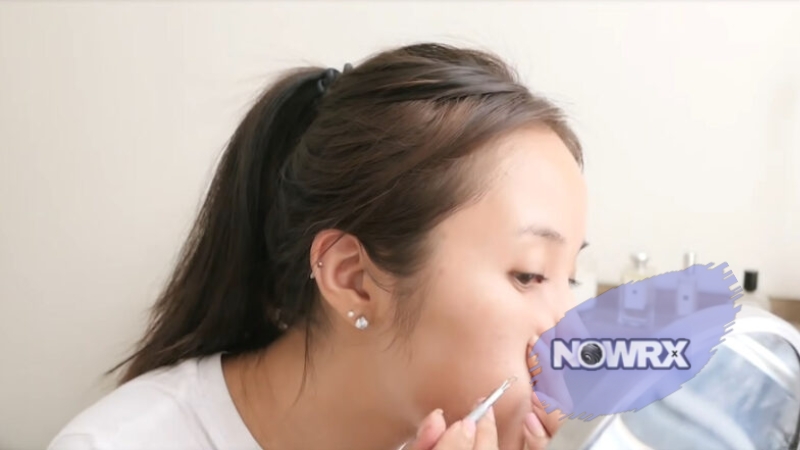If you’ve ever had a rash appear with no apparent cause – it could be due to stress. Characterized by raised red bumps, these uncomfortable rashes commonly occur on the neck, chest, and face. Oftentimes, a stress rash can cause more stress which can lead to an unhealthy cycle of flare-ups.
Fortunately, stress rashes can be treated at home and are generally not a major health concern. Let’s take a look at what causes a stress rash, what it looks like, and some easy tips for how to get rid of it.
Yes, anxiety and stress can cause a rash. In stressful conditions, hormonal and immune changes can cause inflammation and changes in blood flow to the skin. As a result, natural moisturizing factors as well as repair and restoration processes are impaired which can result in a rash.
A typical stress rash is characterized by breaking out with raised red bumps, also called hives. Hives can range from large single welts to tiny dots and may form as clusters.

What Is A Stress Rash?

Simply put, a stress rash is a broad umbrella term for a rash that is triggered by stress. It is a byproduct of the body’s immune system and inflammatory response when placed under stress. This can leave your skin—your body’s protective organ—more vulnerable to allergens, bacteria, fungi, and viruses, which can lead to a rash.
While this can happen to anyone, people who have skin conditions such as eczema, rosacea, and allergies are more likely to develop a rash when stressed. Stress is a common trigger for many and can worsen conditions such as psoriasis.
What does it look like?
A stress rash usually looks like raised red bumps or hives that range from a single welt to a cluster of tiny dots. Commonly, these clusters will appear on the face, neck, chest, arms, and hands. However, they are not limited to those areas and can ultimately appear anywhere on the body. In addition, these clusters may be itchy or cause an uncomfortable burning sensation.
How long does it last?
How long a stress rash lasts will vary from person to person. While most will clear up within 24 hours to a few days, others may last longer. Stress rashes may go away and come back if left untreated or retriggered. Chronic stress-induced rashes can last over 6 weeks and may signify a more serious underlying disorder. Talk to your doctor if you are experiencing a rash that persists and does not go away within a few days.
How To Get Rid Of Stress Rash

While most hives and rashes will clear up on their own, preventing them requires you to pinpoint your potential triggers and take active steps to avoid or reduce them.
Let’s look at some strategies that include both medication and trigger prevention.
Medication
There are a number of over-the-counter and prescription medications that can help you deal with the symptoms of a stress-induced rash. According to the American Academy of Dermatology, the most common medication treatment for hives will include one or more of the following:
- Anti-Itch Lotion or Cream
- Antihistamine
- Corticosteroid
- Omalizumab
- Light therapy
Avoid or Reduce Triggers
Ounce of prevention is worth a pound of cure. In other words, the best way to deal with stress rashes is to learn your triggers and take active steps to avoid or reduce them.
For example, do the rashes occur every time a big deadline comes up at work or you have a fight with your spouse? Learning the root of your flare-ups can allow you to take active steps to prevent them.
Here are a few additional stress reduction strategies to help you out:
- Get a good nights sleep
- Support your immune system
- Improve your breathing
- Talk to a therapist
While stress rashes aren’t usually harmful, chronic inflammation resulting from stress can lead to serious life threatening disease such as cardiovascular disease and depression. Thus, it’s critical to try to remove consistent stressors or practice stress reduction strategies.
Can Stress Cause Itching Without Rash

Yes stress can cause itching without a rash. When we are stressed, the body undergoes distinct changes which can exacerbate the urge to itch. However, stress is not the only cause of itching without a rash. In addition to stress, itching without a rash can be caused by certain illnesses such as skin cancer, liver or kidney disease and even certain medications. Talk to your doctor if you are experience chronic itching without a rash as they will be able to help you figure out the root cause.
How To Treat
Figuring out how to treat stress rash will vary from person to person. Some will go away on their on within a few days, while others will require some sort of over the counter or prescription medication. Ultimately, for a rash that persists you will likely need some sort of medication in combination with techniques for stress reduction. However, talk with your doctor to determine what the best option is for you.
Final Words
Stress rashes, while uncomfortable, are generally not harmful and can be managed with proper care and stress management techniques. Remember, understanding your triggers and adopting a holistic approach towards stress reduction and skin care can significantly help in managing and preventing these rashes.
Drake Holloway, 45, is a pharmacist and freelance blog writer for NowRx.com. He uses his professional background to provide information and opinions on diverse subjects to those seeking guidance.
Related Posts:
- Can Someone Else Pick Up Your Prescription Medication
- Can You Drink Alcohol While Taking Antibiotics? 3…
- How Can I Reduce My Prescription Costs - 6 Effective Methods
- How Do I Get A Prescription For Weight Loss Medication?
- How To Get Adderall Prescription for ADHD
- How To Get Tretinoin Prescription? The Ultimate…








